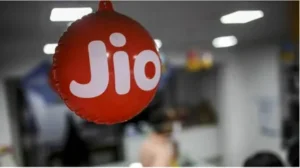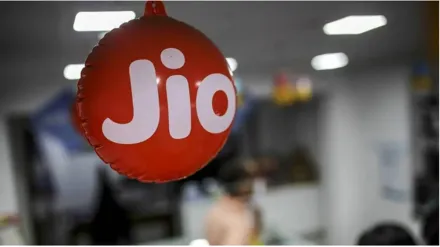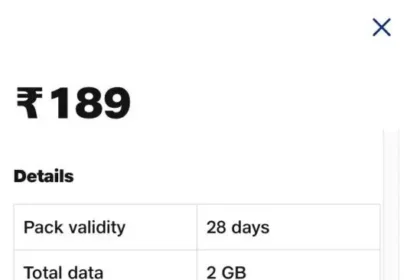Introduction
Reliance Jio has firmly planted itself as the industry leader in India’s telecom sector after its inception in 2016. With more than 450 million subscribers by mid-2025, it commands the most significant market share among all Indian telecom companies. Jio’s cutthroat pricing tactics, unlimited free voice calls, and low-cost data bundles shook up the industry. Its aggressive 4G launch and 5G offerings have brought it into the mainstream in urban and rural India.
But as the telecom market matures and the infill cost increases with the expansion of 5G—during which Jio, along with peers, is pivoting from user addition to profitability and sustainable top-line growth—projection is for a Jio Tariff Hike increase by around 10–12% by the end of 2025, following up on the price increase effected in July 2024.

As we head into this hike, it’s crucial to know what the hike is about, how it may impact various user segments, and what consumers should do to prepare.
Background
The coming Jio price increase in late 2025 is not unexpected—it’s just part of an overall trend in the Indian telecommunications sector, which has been increasing prices slowly but surely since 2021. The most recent significant revision came in July 2024, when Jio, as well as Airtel and Vodafone Idea, rolled out a tariff increase of up to 25% for a broad spectrum of prepaid and postpaid offers. This was Jio’s first significant across-the-board increase in nearly two years and was designed to boost financial parameters that have been under stress because of high capital investments, low margins, and price wars.
With the 2024 hike, Jio’s Average Revenue Per User (ARPU) saw a big jump, from about ₹178 to more than ₹200 by as early as 2025, based on industry reports, particularly in the context of a possible IPO for Jio Platforms. Surprisingly, even as the price increased, Jio kept adding millions of active customers, confirming its value proposition and network stability. During the period between Q3 2024 and Q2 2025, the company added more than 10 million subscribers, demonstrating that user demand remained robust despite the increase in prices.
Jio was among the first networks in India to roll out coverage across the country, with the promise of ultra-fast speeds, reduced latency, and readiness for next-generation applications in gaming, streaming, IoT, and enterprise services. But this technological advancement has not been inexpensive. The company has invested billions of rupees in capital expenditure (CapEx) in building its 5G infrastructure, laying fiber-optic networks, upgrading towers, and buying spectrum licenses.
To compensate for these expenses and reduce Reliance on debt finance, telecom players such as Jio have no option but to raise tariffs slowly. This helps them sustain service quality while reading themselves for future innovations. The policy also goes hand in hand with the government’s expectations of financially healthy telecommunication operators that can aid India’s Digital India initiative.
The 2025 hike is designed to maintain momentum and finance next-phase development in the 5G ecosystem.
What to Expect in the 2025 Jio Tariff Hike
The next Jio Tariff Hike, to be implemented in the November–December 2025 timeframe, will see a 10–12% boost in prices on the majority of mobile plans. The 25% raise in July 2024, this hike will still have a noticeable impact on consumers, especially those employing mid- and high-level prepaid and postpaid plans.
Expected Hike: 10–12%
As per telecom experts and industry players, Jio will most likely increase its tariffs by around 10–12% on several core products. This would mean:
- A ₹299 monthly prepaid plan increasing to around ₹330.
- A ₹666 3-month validity increasing to ₹735–₹750.
- Postpaid between ₹399–₹999 increasing in proportion.
- The changes are made to slowly increase Average Revenue Per User (ARPU) without significantly affecting subscriber numbers or raising churn.
Impacted Plans: Mid to High-Tier Consumers in Target
The increase is likely to target mid- and high-end consumer groups, where data usage is heavy, and price elasticity is lower. These are:
- Unlimited data/voice bundled packs
- Long validity plans with longer durations
- Postpaid family or premium plans
- 5G plans (which can see even further differentiation by speed and data caps)
- Jio can also change its bundled packages (e.g., OTT + data + voice) and introduce newer plans with better services but at a higher cost.
Entry-Level Plans Can Be Exempted
To ensure affordability among low-income subscribers, Jio is said to be thinking of not altering entry-level plans. These include recharge levels between ₹155 and ₹200, which enables Jio to retain its large rural and semi-urban subscriber base.
Jio’s earlier plan for the July 2024 price hike avoided price increases for low-end subscribers, minimizing churn at the pyramid base.
Timeline: November–December 2025
Several industry reports indicate that the next tariff revision will come in Q4 of calendar year 2025, perhaps around late November or early December. This is in line with:
- The post-festive season slump, in which users have already bulk-recharged.
- Financial year-end approaches that emphasized Q3/Q4 earnings increase.
- Smaller gaps in customer acceptance as a result of staggered pricing shifts among telcos (Airtel and Vi likely to increase around the same period).
As the telecom industry prepares for this adjustment, it’s evident that the 2025 increase is a long-term plan to match prices to usage trends and investment in infrastructure. It may not be as sharp as previous increases, but it will still require consumers to check their plans and get ready.
Why Jio is Increasing Prices
Reliance Jio’s move to increase mobile prices in late 2025 is more than a pricing action—it’s a strategic imperative. The 10–12% projected increase is a set of financial and competitive influences that are transforming India’s telecom sector.
- Enhancing ARPU and Profitability
One of the primary motivations for the tariff increase is to drive ARPU higher, which a telecommunication operator generates per user. India’s telecommunication industry has maintained some of the lowest ARPU rates in the world, mainly as a consequence of brutal price wars.
For Jio, increasing ARPU is essential to boost margins, keep investors happy, and deliver consistent earnings growth. Post-July 2024 increase, Jio’s ARPU increased from ₹178 to over ₹200. The future increase is anticipated to take it further, with internal goals set at allegedly ₹220+ in FY26.
Increased ARPU also allows the company to treat customers better, invest in quality of service, and operate sustainably without excessive borrowing.
- Capital Expenditure on 5G Infrastructure
Jio leads the 5G revolution in India. It was the first company to confirm pan-India 5G rollout and has undertaken humongous investments in next-generation network infrastructure. From the costs of buying the spectrum to deploying a standalone 5G architecture, backhaul through fiber, and network densification, the capital expenditure (CapEx) burden for Jio has risen substantially.
To recover these expenses and continue to grow without depending too much on outside, non-core debt, Jio requires a sustainable revenue model. Tariff increases assist in balancing the books while enabling long-term 5G coverage, service performance upgrades, and innovation in services such as IoT, edge computing, and AI platforms.
- Enabling Future Growth & IPO Valuation
Though Reliance has postponed the Jio Platforms IPO, market analysts are convinced that the final listing remains part of the long-term plan. To achieve a robust valuation when the IPO happens, Jio must prove:
- Persistent subscriber acquisition
- Rising ARPU
- Sustained profitability margins
- Scalable digital infrastructure
Price increases directly feed into these numbers, placing Jio firmly as not only a telco player, but as a digital services behemoth, ranging from broadband and OTT to cloud, fintech, and enterprise offerings.
Competitive Balance with Airtel and Vodafone Idea
Jio Tariff Hike is not working in a vacuum. Its two biggest competitors—Bharti Airtel and Vodafone Idea (Vi)—are likely to raise tariffs by comparable margins (10–15%) by the end of 2025. This presents a once-in-a-blue-moon moment of pricing convergence in an industry that was otherwise plagued by cutthroat undercutting.
By coordinating hikes with the competition, Jio prevents losing customers due to price differences, while bringing the entire industry towards revenue recovery. All this indicates a maturing telecom space that’s moving away from price wars and towards value-based pricing. Both business needs and market forces drive Jio’s 2025 price increase.
How You Can Prepare
- Prepay for Longer-Duration Plans Before the Hike
One of the best ways to outsmart the hike is to freeze today’s rates by taking longer-duration prepaid plans now. Most consumers are opting:
- 84-day, 6-month, or yearly validity recharges so they don’t have to pay higher prices later.
- Plans combining data, voice, and OTT subscriptions, which could become pricier after the hike.
- Because telecom providers typically offer advance notice of a hike, recharging early can provide you with 3–12 months of price protection.
- Explore Switching to Lower-Tier or TRAI-Regulated Plans
If your usage is light—like basic calling and light internet surfing—you might not require a premium plan at all.
- Downgrade to lower-tier plans providing adequate voice and limited data.
- TRAI-mandated plans, or cheap combo plans with limited data, usually below ₹200.
- This transition applies especially to senior citizens, rural subscribers, and secondary devices.
- Watch Out for Bundled or Promotional Plans in Announcements
Ahead of tariff hikes, Jio can unveil:
- Bundled plans with greater value, such as extra OTT apps, cloud storage, or cashback.
- Promotional recharges to lock in customers before new rates kicking in.
- Watch the MyJio app, SMS notifications, and official statement for any announcements, particularly during special festival periods or quarterly promotions, when bonus data or discounts are announced.
- Alternative Operators Comparison (Airtel, Vi, BSNL)
Although Jio is likely to initiate the hike, Airtel and Vodafone Idea (Vi) are set to follow suit with similar hikes. But:
- BSNL is likely to maintain slightly lower-priced plans, though at reduced speeds or with limited 5G availability.
- Regional players could introduce community or niche offerings that beat the big three on price.
- Where price sensitivity is high, comparing network coverage, speed, and plan features before switching is a good idea.
- Assess Your 5G Usage Requirements Against Pricing
Jio has quickly expanded 5G services in India, but not everybody requires lightning-fast speeds or unlimited data. Before signing up for an expensive 5G plan:
- Ask yourself: Do I use that much data or speed daily?
- If you mostly rely on Wi-Fi at work or home, or hardly ever stream high-definition content on mobile, think about skipping 5G-specific plans.
- Some users are also opting to restrict 5G access temporarily to lower battery consumption and data use on mid-range devices.
Don’t wait until the hike smacks into your wallet. A couple of forward-thinking decisions now can save you hundreds—or even thousands—of rupees in the coming year.
Industry Implications
Jio’s 2025 tariff increase—coupled with similar action by other telecom companies—is more than simply a price tweak. It represents a strategic inflection point for the entire Indian telecom industry.
- Sector-Wide ARPU Improvement and Financial Health
India’s telecoms have long struggled with ultra-low average revenue per user (ARPU) resulting from bitter price wars. As of early 2024, India’s ARPU was among the lowest in the world, at ₹175–₹180 for most telecoms. This prevented margins from being sustained, or investment made in infrastructure, or support for innovation.
The impending tariff increases in the near term and subsequent ones are likely to drive sector-wide ARPU towards the ₹220–₹240 band by FY26, providing a more sustainable business situation. The resultant stronger financial position will facilitate:
- Improved network quality and customer experience
- Increased R&D and technology expenditure
- Lesser debt financing dependence
The likes of Jio and Airtel are presently set to emphasize value-based pricing over volume growth alone, marking a sign of an approaching mature market attitude.
- Investor Confidence and Market Performance Boost
The tariff increase of 2024 had already strengthened investor sentiment, and the 2025 revision will further support it.
- Improved earnings per share (EPS) for listed telecom players
- Stronger credit profiles and lower financial stress
- Revived IPO enthusiasm for Jio Platforms, albeit pushed to after 2025
This is indicative of investor faith in the long-term sustainability of the Indian telecoms space, particularly as it becomes increasingly digitally integrated.
- Digital Services Roadmap and Monetization
The most significant implication may be how tariff normalization enables the second wave of digital services in India. With revenues more assured, telcos can ramp up the development and monetization of offerings like:
- 5G enterprise solutions (for logistics, healthcare, manufacturing)
- IoT platforms and smart city connectivity
- Cloud computing and edge AI
- Consumer digital bundles (OTT, gaming, education, fintech)
Jio is looking to break out of the telecom space and become an end-to-end digital service provider, offering fiber broadband, media, commerce, and cloud infrastructure.
The tariff increase serves as a funding driver for these initiatives, providing funding for long-term investments in India’s digital economy.
The 2025 tariff increase marks more than an increase in cellular bills—it is a vital turning point in the restructuring and consolidation of India’s telecom industry.
Conclusion
As Reliance Jio gets ready to introduce another round of price increases in late 2025—approximated at 10–12%—Indian mobile subscribers are poised for a significant change in mobile service rates, particularly mid- and high-end plans. Whereas basic plans could be left untouched, the majority will notice slight hikes in monthly mobile bills, especially those consuming big data packs, 5G services, or high-end postpaid plans.
This hike adjustment is just part of the larger telecom industry movement toward financial health and future-proofing, as operators are concentrating on building ARPU, backing 5G rollout, and setting up for digital transformation. Consumers will see more robust and scalable networks, but also the requirement for more intelligent usage choices.
To get the hike right, users should:
- Prepay for longer-term plans ahead of the hike kicking in
- Review usage patterns and explore cheaper or simplified plans
- Be on the lookout for bundled deals and special offers
- Compare different operators to safeguard ongoing value
Remaining proactive and up-to-date will be key. Rate increases are becoming a standard aspect of the changing telecom environment, but with foresight, users can guard their budgets without sacrificing service quality.
FAQs
- When will the Jio tariff hike happen in 2025?
The hike will be implemented between November and December 2025, though Jio usually gives notice a couple of weeks prior.
- By how much will Jio plans go up?
Most of the mid- to higher-tier plans will increase by approximately 10–12%. For instance, a ₹299 plan may be raised to around ₹330.
- Will entry-level or low-cost Jio plans also increase in price?
Unlikely so. Entry-level plans in the ₹155–₹200 segment might not see any hikes to keep them accessible to low-end users.
- Will postpaid plans also be impacted?
Yes, postpaid plans would also undergo similar price hikes, particularly in higher-value business or family packs.
- Why is Jio raising tariffs once again following the 2024 hike?
The tariff hike is intended to increase ARPU, facilitate 5G growth, enhance profitability, and position the company for long-term financial viability in line with the market trend.
- Is it possible to skip the hike by recharging early?
Yes, you can pay for long-term plans (e.g., 3 months, 6 months, 1 year) upfront now to secure prevailing rates before the rate hike takes effect.
- Will Jio offer new features or benefits with the increased prices?
Perhaps. Jio can introduce bundled packages featuring OTT platforms, 5G speed plans, or cloud storage to warrant higher tariffs.
- How does that compare with Airtel and Vodafone Idea’s price hike?
Airtel and Vi, too, will introduce similar increases (10–15%) at around the same time, keeping industry competition in line.
- Will Jio’s 5G plans get pricier?
Yes, 5G use can be charged separately or included in higher-end tiers, so those who use more data or need faster speeds can pay more.
- What can I do if I can’t afford the new prices?
You could switch to a lower plan, a TRAI-controlled basic strategy, or consider alternative providers such as BSNL, based on your usage and network availability.








